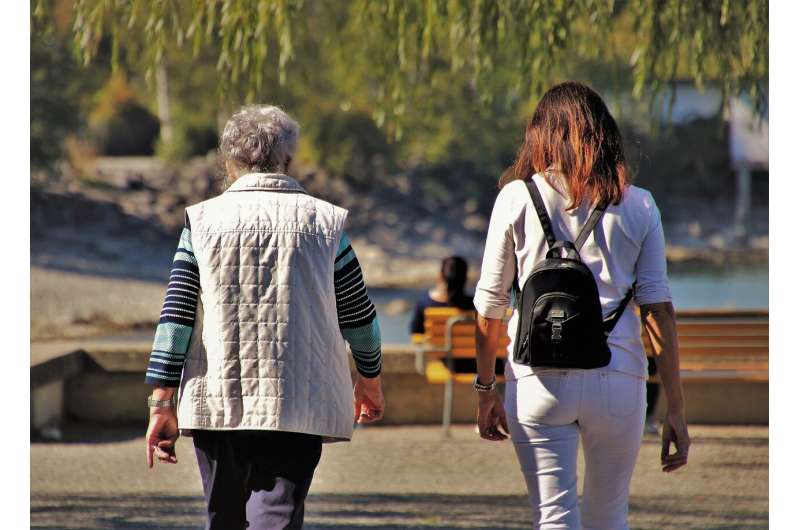Credit: CC0 Public Domain
DEAR MAYO CLINIC: I was always led to believe that leaking urine while sneezing or exercising is part of life for women after menopause, but my health care provider tells me that isn't necessarily true. I've tried Kegel exercises, but those don't seem to help. Would pelvic floor therapy be a good next step? What does that involve?
ANSWER: The condition you describe, known as stress incontinence, does become more common with age, especially in women. But that doesn't mean you just have to put up with it. Stress incontinence is not an expected outcome of menopause, and effective treatment is available.
Stress incontinence is triggered by pressure placed on the bladder and pelvic floor. Coughing or sneezing can cause stress incontinence, as can running, jumping, lifting something heavy or other physical activity.
Women are more likely than men to have stress incontinence. Pregnancy, childbirth, menopause and the anatomy of the female urinary tract all contribute to the frequency of this condition. Age often plays a role, too. As you get older, the muscles supporting the bladder and urethra lose some of their strength, and that increases the chance of urine leaks.
Being overweight also can lead to stress incontinence, since excess weight increases pressure on the abdominal and pelvic organs. Stress incontinence usually results in slight to moderate leaks. In general, occasional minor stress incontinence doesn't require treatment.
But when stress incontinence happens frequently or if it disrupts your daily activities, it's important to seek medical care. The first step would be to make an appointment with your primary care provider or gynecologist for a pelvic examination. That exam would be used to check for an underlying medical condition that could be leading to incontinence.
If another condition is discovered, treatment for it may help eliminate stress incontinence. For example, in some women, particularly those who are past menopause, vaginal atrophy—a condition that involves thinning, drying and inflammation of the vaginal walls—can contribute to stress incontinence. Treatment such as hormone therapy may reduce the symptoms of vaginal atrophy and ease stress incontinence.
Another condition, vaginal prolapse, or pelvic organ prolapse, in which the muscles, connective tissue and ligaments that support the vagina weaken and stretch, also can lead to stress incontinence.
If no underlying condition is found, then a review of the Kegel exercises could help. Kegel exercises use a specific technique to strengthen the pelvic floor muscles. Your health care provider or a pelvic physical therapist can work with you to make sure that you are performing the Kegel exercises correctly and confirm that you are doing them often enough to receive benefit.
If stress incontinence persists after that, a pelvic physical therapy consultation would be an appropriate next step. That appointment would include an evaluation of your spine, hips, pelvis and pelvic floor muscles.
Stress incontinence can be due to weakness or loss of flexibility in any of those areas. For example, while weak pelvic floor muscles often are blamed for stress incontinence, if those muscles are too tight, that can contribute to the problem, too.
Depending on the results of your evaluation, pelvic floor physical therapy may be useful at that point. A pelvic physical therapist can provide instruction and guidance on exercises that will be most beneficial for you. Using incontinence pads, such as Poise pads, or protective undergarments may make you feel more comfortable while you work on improving symptoms of stress incontinence.
If lifestyle changes and therapies do not lessen or eliminate episodes of stress incontinence, your health care provider may recommend a device designed to help control the condition. In some cases, surgery to improve closure of the sphincter or support the bladder neck may be considered.
Keep in mind that although stress incontinence is a common problem, especially in older women, it is not a condition you simply have to endure. Staying healthy as you age involves maintaining or improving strength overall, and that includes your pelvic floor muscles.
©2020 Mayo Foundation for Medical Education and Research
Distributed by Tribune Content Agency, LLC.





















